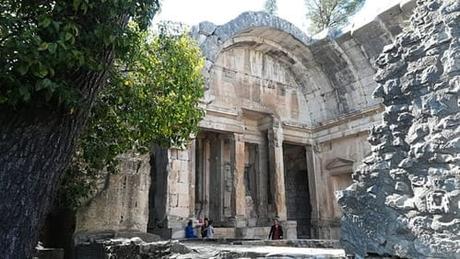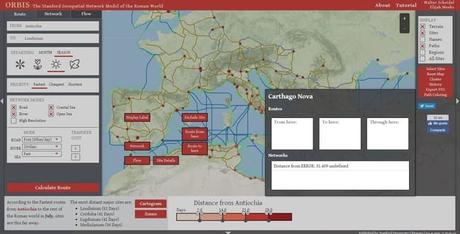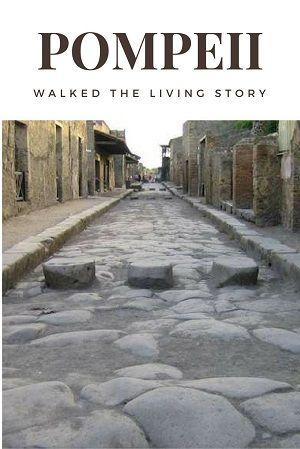Tourism in Ancient Greece and Rome: Historic Evolution of Tourism
Tourism is a series of trips made for pleasure or for commercial, professional or similar reasons, during which the absence of habitual residence is only temporary.
Modern tourism was born in the XIX century, as a consequence of the Industrial Revolution, with displacements between distant places, with the main intention of developing leisure, rest, culture, health, business or family relations.
These movements are differentiated by their purpose of other types of travel originated by wars, migratory movements or conquest. But tourism has many historical antecedents.
Ancient Age Tourism: Greece
In 776 BC, the first Olympic Games were held, which consisted of athletic competitions in honor of the gods of Olympus. Artistic and athletic offerings were offered as a gift. Many times sacrifices and prayers were also performed in honor of some god in particular.
Although lesser known, the Pitios, Ismios and Nemeos festivals were also celebrated. These celebrations mobilized a large number of people, who of course, needed transportation and roads to travel. The roads system was very similar to that of the Persians and they usually traveled on foot or by donkey.
Greece had a network of inns that only offered a bed for the night. They did not have dining rooms or bathrooms
It is also known that in each city public baths were built, open to everyone, where tourists of that time had to bring their own towels. They took off their clothes and kept them in special lockers, and then a slave took care of the hygiene with jars of hot and cold water.
Acropolis & Pyramids
Pilgrimages to the different temples of Greece and to the oracles were very common. the most important one was that of Apollo in Delphi and among the most visited sanctuaries is the one of Esculapio, god of medicine.
The Greek lands also offered medicinal baths. Also seaside resorts, theater festivals and the opportunity to see monuments such as the Acropolis of Athens. The Acropolis are from the fifth century BC became one of the most visited sites in the world ancient along with the pyramids of Egypt. These were two of the seven wonders of the ancient world.
The Greeks visited other regions, such as Egypt. In most cases these visits were for military or trade matters, although it is known that the pyramids attracted many tourists.
Proxenos
In ancient Greece there were offices called proxenos. Here foreigners were received (it is remembered that foreigners did not have any kind of rights because of their status as non-citizens). It was for people who had problems to return to their city or country.
They could also need lodging, or even a loan to continue their trip. Many times the managers of these almost consular offices, arranged with merchants passages in boat where the tourists could take their own servants, offering them food and drink.
Slaves & Tourism
In classical Greece free men gave great importance to leisure, and devoted it to culture, entertainment, religion and sport. We must remember that all these activities could only be done by free men of the upper class or the Nobles. Many slaves were also available at that time.
Approximately seven slaves for each free man. It is for this reason that tourism was an exclusive activity of wealthy class that moved with servants, slaves and a considerable guard for protection. The tourist activity that was not religious or to attend the Olympic games was scarce.
Tourism in the Roman Empire
During Roman Empire the Romans frequented thermal waters and great spectacles, like the theaters, and the coliseums. They made trips to the Mediterranean coast in the city of Pompeii and Herculaneum, Campania area (near Naples). Also the island of Capri, where there were summer residences. The Emperor Tiberius had a villa on the island of Capri (today you can visit its ruins).
These pleasure trips were possible due to Pax Romana, the development of communication routes. They also influenced economic prosperity due to the trade that allowed the creation of an upper class. And of course free time.
A Bit of Roman History
During the empire (27 BC to 476 AD) begins a period of absolutism in Rome, where the emperor was chosen by the army. With Octavio Augusto (first emperor) the Pax Romana was achieved, which lasted approximately 200 years. In this epoch is where the Roman tourism had its maxima.
The empire was divided into provinces that in turn were divided into Municipium and Coloniae. It is depending on their legal hierarchy Each territorial division had services for public enjoyment and entertainment, which were sometimes visited by inhabitants of other territories.

All Roads Lead to Rome
These attractions were temples, circus maxima, pantheons, basilicas, markets, amphitheatres and theaters. All the provinces and colonies communicated through a network of roads, roads and roads, which began to be built around 150 BC, covering some 100,000 miles. T his allowed to reach the entire empire from Scotland and Germany to Egypt, Persia and Crimea
Only for Military Use
In the beginning the Roman roads were designed for military use. Legions and military equipment could be moved much faster than if they were transferred to cross country. The time of transfer between cities was shortened not only for military use but for trade and tourism.
Patrician families used to send their children to Greece to receive rhetoric and philosophy classes. In this case, the route by sea was the most chosen, for the comforts and speed compared to the terrestrial displacement. Accommodation facilities on routes far from the Roman metropolis were very scarce.
Julio César, who was traveling at an extraordinary speed, traveled from the Rhone ( germany) to Rome in about eight days. However, the fastest journey of antiquity was, the one that made T iberius to Drusus from Tichinum in Germany, a distance of 200 miles, made in 20 hours even though he had only one guide and had to make several changes of mount.
ORBIS - University of Stanford Raod & Network Calculator on Line
The Roman Empire Roads
There were stone signs indicating the distance to the next city, the name of the road, its construction date and its constructor Every 10 miles approx. There were some posts where travelers could change their exhausted horses and even eat. It was through these trade routes that tourism was developed as a secondary activity. Maritime routes were also used, being the main ports those of Alexandria / Egypt), Ostia (Italy) and Cartago Nova ( Spain).
ORBIS - University of Stanford Raod & Network Calculator on Line

Stones on The Roads
Plutarch, attributed to Gaius Graco, the placement of stones on the sides of the road, at close distance from each other, so that those who traveled on horseback could ride from them without the assistance of slaves. Keep in mind that the Romans did not use stirrups when riding.
The roads had a post service every five or six Roman miles and it was possible to travel through the Roman Empire at a rate of about one hundred miles a day or more. The journey from Antioch to Constantinople, a distance of 752 miles could be made in about six or seven days.
Tourism: Only the Upper Class
The Roman citizens were very fond of tourism, in most cases for pleasure. We must consider that it is the same case as the Greeks. Only free noble and upper class men could afford a tourist transfer. This transfer included servants, slaves, clients and armed escort. This was both by land and by sea.
The only documented case of the displacement of a high class and noble character was that of Cato the Elder, Senator and Roman governor of Hispania ( Present Spain). Cato was mobilized on foot or on horseback with only one servant. The day he left to be governor he sold the horse so as not to cause more expenses to the treasury. Needless to say, his example was not imitated by anyone.
Returning to the main theme, tourism among the Romans included a displacement overnight at least one night and less than a year to a place of destination. All this done, of course, in free time. They had a lot of free time, getting to have 200 holidays a year (in 345 AD)
Non-Religious Tourism
The Romans traveled to see the temples of the Mediterranean, the pyramids and monuments of Egypt. Also to attend the Olympic Games in Greece and the prosperous markets of Asia Minor. In these markets there were many exotic items never seen in Rome, with which to decorate the villas of Campania.
They also hired local guides and consulted papyri that explained a certain area and their entertainment possibilities. They were the tour guides of that time. Of course they bought something smaller as souvenirs and had a tendency to engrave the traveler's name on the stones of the monuments they visited. This was at the request of the inhabitants, since the prestige of a noble visitor attracted more tourists.
The trips were made for pleasure, business or health or religious issues. Religious tourism and pilgrimages to both Greek and Roman temples became part of almost every tourist itinerary. But it was not about devotion but about entertainment. These temples were visited by tourists who in some cases were no longer sacred places, but monuments to visit. (almost equal to what happens today in the Catholic churches of Europe)
Weekend Roman Villas: Capri & Pompeii
The Romans also liked to spend a leisure time away from the city and used to move to the Campania (Naples). From the time of the empire of Octavius Augustus, the Senate was no longer an institution of power. The emperor reigned and were not consulted.
The senators retired to live in the countryside, near Rome but away from it. The area chosen was Campania, Cities such as Pompeii, Herculaneum, Tivoli, Beneventum and Islands such as Capri, where luxury villas were built. Infrastructure was also built as additional roads, ports, passenger ships, inns and markets.

The houses in the city of Rome became the second residence and the country villa the habitual residence. You find the infrastructure was also built in those compestres places. Amphitheatres (Pompeii), circus maxima, thermal baths and medicinal baths. all this thanks to the pax romana that lasted approximately 250 years from the reign of Octavius Augustus.
Emperor Caracalla built in Rome the baths that bear his name. They were public baths that had steam rooms, pools of hot water (caldarium) and cold (frigidarium), gymnastics, rest and massage rooms. There were also writing rooms, libraries and gardens.
On the island of Capri, the Tiberian emperor built a luxurious villa with a swimming pool. You can still visit today's day
Amphitheaters for all
The construction of the Maximum Circus and the Colosseum in Rome, led to tourism also going in the other direction. Inhabitants of the entire empire wished to know Rome. The network of roads, security and the pax romana contributed to a flow of tourists to the Rome.
They also built amphitheatres like the Colosseum in Rome and theaters in other cities, which also enjoyed a fair share of tourists. We can name the theater of Orange (France) and the amphitheaters of Nimes and Arles (France). That amphitheaters can be visited nowadays and in a very good state of conservation.
My Darling, and if We Visit Esparta?
During the Roman domination in Greece, the city of Sparta, powerful and famous in other times became a focus of tourism on the part of the Roman upper class. Sparta no longer had possibilities of any kind, military or economic or political. But focused on their ancestral military education to young people. The education of the It was so hard that it became a tourist attraction in itself
The ritual combats that had traditionally been fought in the shrine of Artemis Ortia, under Roman domination, became the dimastígosis (they existed for a long time) , where the children were scourged and sometimes even death. Also the Romans had a deep curiosity to discover how a city so feared in its time, I am reduced to a town of goat herders and a circus military education.
Cicero tells in the Tusculanas (II 34) how Spartan education and its excesses had become a spectacle that attracted tourists. The crowd that comes to the show is so numerous that it was necessary to build an amphitheater in front of the temple to welcome it. This show attracted tourists until the fourth century of our era. Documented by Libanio in his Discourses, (I, 23).
End of the first part : Tourism in Ancient Greece and Rome
The History of Tourism in Ancient Greece and Rome.
4.5 (90%) 2 vote[s]
Categories Tags France, Empire, Greece, History, rome Germany, History, Italy, Medieval, Pompeii, Spain, Travel, Travel Accessories

